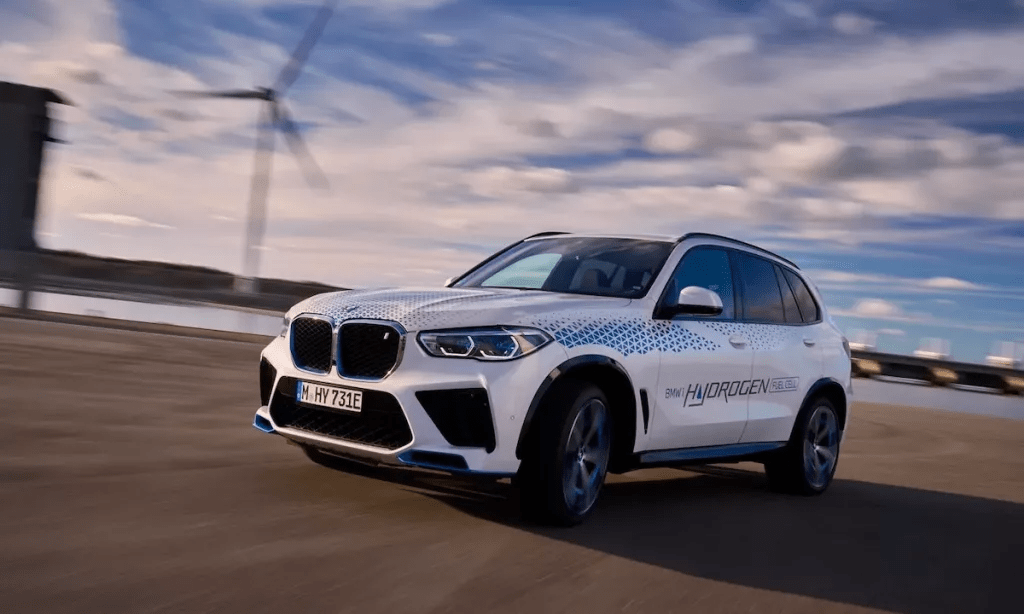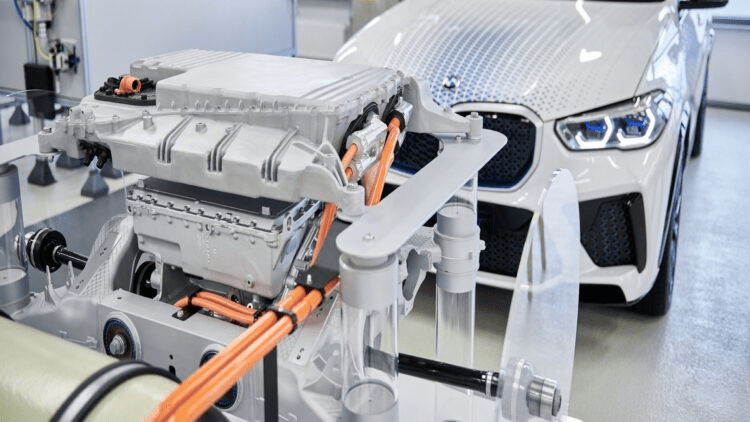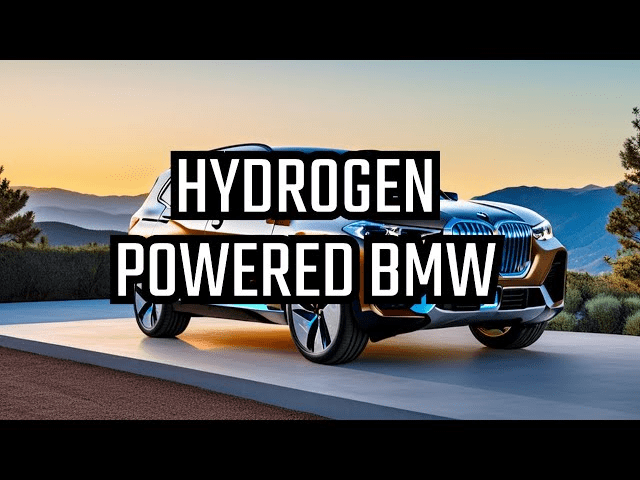In the race toward reducing global emissions and combating climate change, the automotive industry is exploring various alternatives to fossil fuels. While electric vehicles (EVs) have garnered significant attention, BMW is taking a different route with its hydrogen-powered engine technology. This development marks a significant shift in the landscape of sustainable mobility, presenting hydrogen as a viable, long-term solution for zero-emission vehicles. With zero tailpipe emissions and the potential to revolutionize the way we power vehicles, hydrogen technology is emerging as a complementary alternative to both gasoline and electric propulsion systems.
BMW’s commitment to developing a hydrogen-powered engine is part of its broader push towards sustainability and innovation. The company has been exploring hydrogen technology for decades, recognizing its potential to provide long-range driving, quick refueling times, and exceptional performance without contributing to greenhouse gas emissions. Hydrogen, the most abundant element in the universe, holds immense promise as an energy carrier. When utilized in fuel cells, it produces electricity with water vapor as the only emission—offering a clean, sustainable energy source for powering vehicles.
However, despite its promise, the widespread adoption of hydrogen-powered vehicles still faces several ecological challenges that must be overcome. Addressing these challenges will be key to realizing hydrogen’s potential as a cornerstone of a sustainable transportation future.
Ecological Challenges and Solutions
Hydrogen-powered vehicles offer significant environmental benefits, but they also present unique challenges related to hydrogen production, infrastructure, and costs. Overcoming these obstacles will be essential for hydrogen to become a mainstream alternative to traditional gasoline engines and electric vehicles.
Challenges
Hydrogen Production is one of the biggest ecological hurdles for hydrogen technology. Currently, the majority of hydrogen is produced using natural gas in a process known as steam methane reforming. Unfortunately, this method emits large amounts of carbon dioxide, which significantly reduces the environmental benefits of hydrogen-powered vehicles. Without transitioning to cleaner methods of production, hydrogen may remain reliant on fossil fuels, undermining its potential to reduce greenhouse gas emissions.
Infrastructure also poses a significant barrier. Unlike electric vehicle (EV) charging stations, which are rapidly expanding worldwide, the infrastructure for hydrogen refueling stations remains underdeveloped. This limited availability of hydrogen refueling stations means that, for the average consumer, hydrogen-powered cars may not yet be a practical choice. Expanding the network of hydrogen stations is crucial for the wider adoption of hydrogen vehicles, particularly in areas where long-distance travel is common.
Cost is another considerable challenge. Hydrogen production, storage, and transportation are expensive, and these costs are currently reflected in the price of hydrogen vehicles. While the technology behind hydrogen fuel cells is advancing, the costs associated with hydrogen remain higher than those of both gasoline and electric vehicles. For hydrogen to become a feasible option for mainstream consumers, the industry must find ways to bring these costs down.

Solutions
A key solution to the environmental and economic challenges associated with hydrogen production is the development of green hydrogen. Unlike conventional hydrogen, which is produced using fossil fuels, green hydrogen is created through the electrolysis of water powered by renewable energy sources such as wind, solar, and hydropower. This process splits water into hydrogen and oxygen without generating carbon emissions, making it a truly sustainable energy source. Investment in green hydrogen technologies will be crucial for reducing the carbon footprint of hydrogen-powered vehicles and maximizing their environmental benefits.
Infrastructure development is another critical step in ensuring the success of hydrogen-powered vehicles. Several countries, including Japan, Germany, and South Korea, have already begun investing in hydrogen infrastructure, expanding the availability of refueling stations. By increasing the number of hydrogen stations and improving the accessibility of refueling networks, governments and private companies can make hydrogen vehicles a more attractive option for consumers, particularly for long-distance drivers and those in rural areas.
Cost reduction efforts are also underway, with manufacturers and researchers working to lower the costs associated with hydrogen production and storage. Advances in fuel cell technology, more efficient hydrogen production methods, and large-scale deployment of hydrogen production facilities could help make hydrogen vehicles more affordable. Additionally, the scaling of green hydrogen production could drive down the costs of producing hydrogen fuel, allowing it to compete with gasoline and electric alternatives in the marketplace.

BMW’s Hydrogen Engine: A Breakthrough
BMW has long been a pioneer in hydrogen research, dating back to the 1970s. Over the years, the company has invested in developing hydrogen-powered vehicles that showcase both sustainability and performance. Today, BMW’s hydrogen engine is poised to be a breakthrough in clean mobility, offering a sustainable alternative to traditional internal combustion engines.
BMW’s hydrogen engine operates using a fuel cell system, which converts hydrogen into electricity through an electrochemical reaction. Unlike combustion engines, which burn fuel and generate heat, fuel cells create electricity directly, resulting in greater efficiency and fewer moving parts. This technology not only eliminates the harmful emissions associated with burning fossil fuels but also provides long-range driving capabilities, making hydrogen vehicles an ideal choice for long-distance travel and heavy-duty vehicles.
BMW’s hydrogen engine is also designed for high performance. The company’s prototypes have demonstrated impressive power and acceleration, comparable to traditional gasoline-powered vehicles. Additionally, hydrogen fuel cells offer the advantage of rapid refueling, with hydrogen tanks taking just a few minutes to refill compared to the longer charging times required for battery-electric vehicles. This makes hydrogen vehicles particularly well-suited for use in commercial fleets, long-haul trucks, and public transportation systems where time is of the essence.
In terms of environmental impact, BMW’s hydrogen engine is a clear winner. Hydrogen vehicles produce zero tailpipe emissions, with water vapor being the only byproduct. This makes hydrogen a particularly appealing option for reducing air pollution in urban areas, where transportation is a major source of harmful emissions. As cities around the world implement stricter emissions regulations, hydrogen vehicles could play a crucial role in achieving cleaner air and healthier living environments.
The Road Ahead
While hydrogen technology holds immense potential, there are still several obstacles that need to be addressed before hydrogen-powered vehicles become a common sight on the roads. The production of green hydrogen must be scaled up significantly, and governments need to continue investing in infrastructure development to ensure that refueling stations are widely available. Moreover, reducing the costs associated with hydrogen production and storage will be essential for making hydrogen vehicles more affordable to consumers.
Despite these challenges, BMW is committed to advancing hydrogen technology and working with industry partners to address the ecological and economic barriers. The company’s hydrogen engine prototype represents a major step forward in fuel cell technology, and with continued investment in research and development, hydrogen vehicles could soon become a mainstream option for consumers.
BMW’s efforts to develop hydrogen-powered engines align with broader global trends in sustainability. As the world moves away from fossil fuels, hydrogen has the potential to play a significant role in decarbonizing the transportation sector and reducing greenhouse gas emissions. By investing in hydrogen technology today, BMW is helping to lay the foundation for a cleaner, more sustainable future in mobility.
Conclusion
BMW’s hydrogen engine represents a bold leap toward a future of sustainable transportation. By addressing the ecological challenges of hydrogen production, infrastructure, and cost, BMW is paving the way for hydrogen-powered vehicles to become a viable alternative to gasoline and electric cars. As hydrogen technology continues to evolve, it has the potential to revolutionize the automotive industry, providing a cleaner, more efficient way to power vehicles. With its long-range capabilities, fast refueling times, and zero emissions, hydrogen could play a vital role in reducing global greenhouse gas emissions and combating climate change. BMW’s innovation in this space marks a significant milestone in the journey toward a sustainable, low-carbon future.
Related Content
- Electric Motors Take the Lead: Why Hydrogen Engines Fell Short
- The World’s First Hydrogen Tram Service Suspended in Foshan, China
- Blue Hydrogen: A Green Dream or Ecological Nightmare?
- A Green Step Forward: Swiss Researchers Advance Hydrogen Storage
- Hydrogen Flight Looks Ready for Take-Off with New Advances
- Hydrogen Water Bottle, 1.5L Hydrogen-Rich Health Jug with SPE Ion Membrane, USB Rechargeable Portable Hydrogen Water Generator, High Capacity Sports Water Bottle for Fitness, Travel, Outdoor & Gym
- Discovering the Future: The Hydrogen Era with BMW iX5
- BMW’s Bold Step into the Future: The Hydrogen Fuel Cell
- BMW iX5 Hydrogen – PressClub Global · Articles

